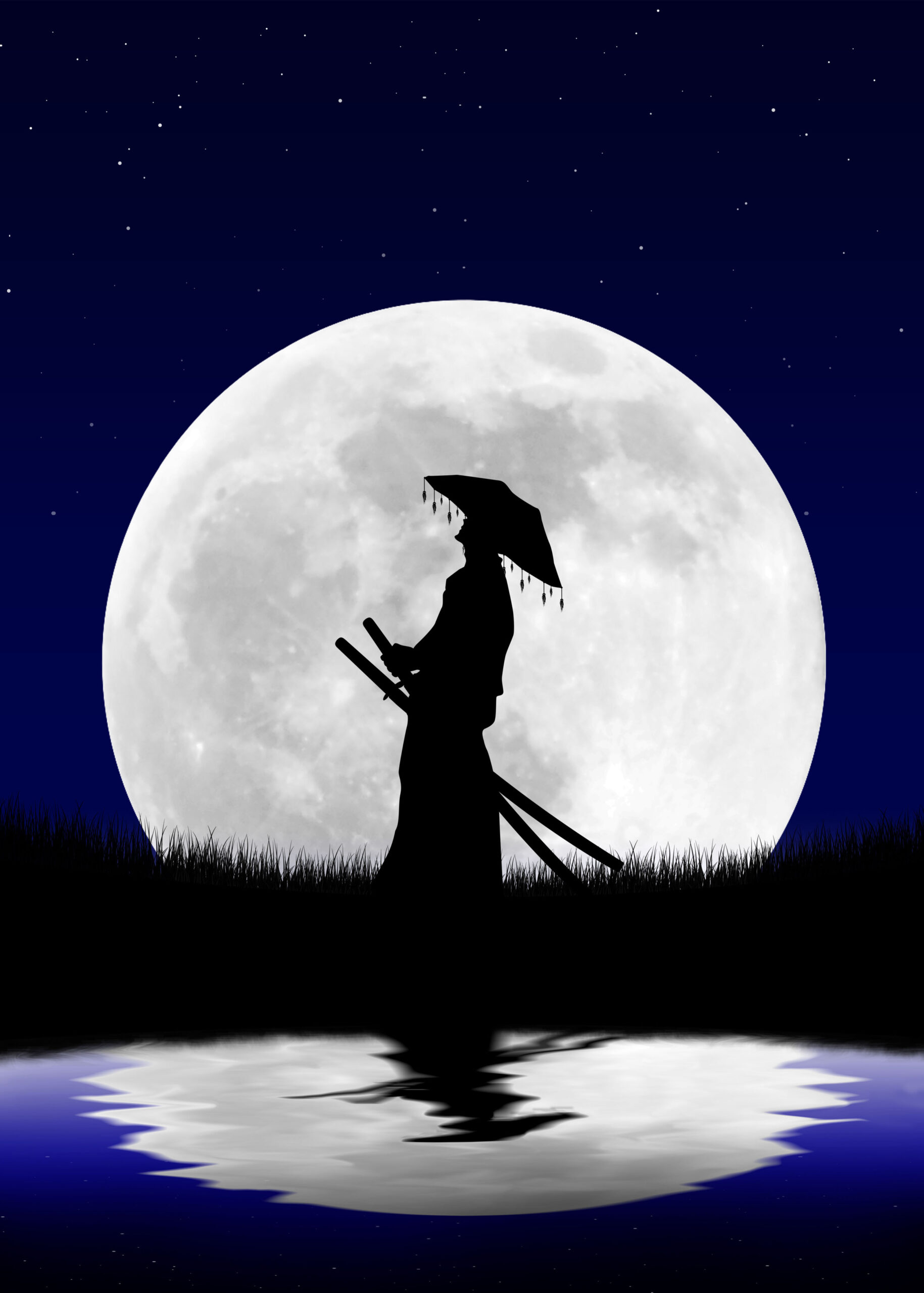The Bushido Code, often referred to as the "way of the warrior," is a set of ethical principles that has significantly shaped Japanese culture and society. Rooted in the samurai class of feudal Japan, Bushido embodies ideals such as honor, loyalty, and courage. This article explores the origins, key principles, and enduring legacy of Bushido, as well as its relevance in contemporary society and its influence on global ethics.
Understanding the Origins of the Bushido Code in Japan
The origins of the Bushido Code can be traced back to the Kamakura period (1185-1333), a time when the samurai emerged as a distinct social class in Japan. Initially, the samurai were warriors serving feudal lords, but over time, they evolved into a complex societal force with a code of conduct that governed their behavior both on and off the battlefield. The term "Bushido" itself began to formalize during the Edo period (1603-1868), when peace led to a greater emphasis on philosophy and ethics among the samurai.
The influences on Bushido are manifold, drawn from various sources including Shinto, Confucianism, and Zen Buddhism. Shinto provided a spiritual and nationalistic foundation, while Confucianism emphasized social harmony and the importance of duty and loyalty. Zen Buddhism introduced concepts of discipline, mindfulness, and inner strength, which would later become integral to samurai training.
Bushido was not merely a set of rules; it was a way of life that encapsulated the samurai’s relationship with their lords, their peers, and society at large. As the political landscape of Japan shifted over centuries, the principles of Bushido adapted, reflecting the changing dynamics of power, warfare, and governance. It became less about combat and more about moral character, especially during times of peace.
During the Meiji Restoration (1868), the samurai class was formally abolished, but the Bushido Code was repurposed to foster a sense of national identity. The ideals of Bushido were incorporated into the ethos of the new nation-state, shaping attitudes toward honor and duty that would resonate through Japan’s modernization efforts and military expansion.
As Japan entered the 20th century, the principles of Bushido became entwined with militaristic nationalism, which had both positive and negative ramifications. While the code inspired a sense of duty and resilience, it also paved the way for conflicts during World War II. Thus, the historical trajectory of Bushido reflects a complex interplay of tradition, adaptation, and societal change.
Today, the origins of Bushido are celebrated in various forms, from literature to martial arts, serving as a reminder of Japan’s rich cultural heritage and the intricate relationship between its past and present.
Key Principles of Bushido: Honor, Courage, and Loyalty
At the heart of the Bushido Code lies a triad of principles that serve as guiding tenets: honor, courage, and loyalty. Honor, or "meiyo," is paramount; it dictates how a samurai should behave both in public and private life. The pursuit of honor often meant adhering to a strict moral code, maintaining one’s reputation, and preserving the dignity of one’s family and clan. The concept of honor extended beyond individual actions to encompass the collective identity of the samurai and their lords.
Courage, or "yū," is another essential principle of Bushido. It embodies not just physical bravery in battle but also the mental fortitude to confront challenges and adversities in life. This courage is often rooted in the samurai’s unwavering commitment to their ideals, enabling them to face temptations and moral dilemmas with resolute determination. The samurai viewed courage as an active choice, one that required both strength and wisdom.
Loyalty, or "chūgi," is perhaps one of the most revered tenets of Bushido. It emphasizes unwavering fidelity to one’s lord, family, and comrades. A samurai’s loyalty often transcended personal interests, demanding complete dedication even at the cost of one’s life. This principle was so paramount that betrayal was considered one of the gravest offenses, leading to severe consequences, including seppuku, a form of ritual suicide, to restore honor.
These three principles form a cohesive framework that guides the samurai’s actions. Honor ensures that their reputation remains intact, courage empowers them to act justly, and loyalty binds them to their commitments. Together, they create a moral compass that informs not only military conduct but also personal relationships and societal responsibilities.
Moreover, these principles are not static; they evolve based on the context in which they are applied. In modern interpretations of Bushido, the essence of honor, courage, and loyalty continues to find relevance in various aspects of life, influencing personal ethics and professional conduct.
In essence, the key principles of Bushido serve as a timeless reminder of the values that can lead to a meaningful and principled life, transcending cultural and temporal boundaries.
The Role of Samurai in Upholding Bushido Values
The samurai served as the primary agents of the Bushido Code, and their role extended far beyond that of mere warriors. As the enforcers of the Bushido principles, samurai embodied the ideals of their code through their daily conduct, military service, and interactions with society. They were expected to serve not only as fighters but also as role models, cultivating virtues that would inspire others.
In times of war, the samurai fought bravely to defend their lords and territories, demonstrating courage and commitment. However, their role was not limited to the battlefield; they also participated in governance and served as advisors to feudal lords. This duality of roles required them to balance martial prowess with wisdom and diplomacy, reinforcing the notion that true strength lies in character as well as in skill.
Moreover, the samurai were tasked with upholding social order and justice, often acting as local magistrates or enforcers of law. Their adherence to the Bushido Code provided a moral foundation for their actions, promoting a sense of duty toward the common people. This social responsibility was an essential aspect of their identity, ensuring that their power was exercised with honor and integrity.
As educators, samurai transmitted the values of Bushido to future generations, emphasizing the importance of training the mind and body. They practiced various forms of martial arts, which were not only physical disciplines but also a means of cultivating mental discipline and ethical behavior. This educational aspect of the samurai’s role helped perpetuate the Bushido Code as a vital part of Japanese culture.
With the decline of the samurai class during the Meiji Restoration, the role of samurai in society transformed dramatically. Yet, their legacy endures through the principles of Bushido, which continue to inspire individuals in various fields, from business to the arts. The samurai’s commitment to honor, loyalty, and courage remains a guiding light for those who seek to embody these values in their own lives.
In summary, the samurai were not merely warriors but the custodians of a rich ethical tradition. Their embodiment of Bushido values shaped Japanese society and continues to resonate in contemporary understandings of honor and duty.
How Bushido Shapes Modern Japanese Society Today
Despite the samurai class being abolished over a century ago, the principles of Bushido continue to influence modern Japanese society in profound ways. The values of honor, loyalty, and courage have found their way into various spheres, from business ethics to interpersonal relationships. Business leaders often emphasize loyalty to the company and its mission, reflecting the samurai’s unwavering commitment to their lords.
In professional settings, the Japanese concept of "wa," or harmony, echoes the ideals of Bushido. The importance placed on maintaining harmonious relationships aligns with the samurai’s focus on loyalty and respect for others. This cultural inclination encourages teamwork and collective responsibility, fostering a sense of unity that is deeply rooted in Bushido philosophy.
Education in Japan also reflects the tenets of Bushido, particularly through the teachings of martial arts. Practices such as kendo, judo, and karate not only promote physical fitness but also instill discipline, respect, and perseverance—key elements of the Bushido Code. As students engage in these martial disciplines, they learn the values of hard work and ethical conduct, preparing them for challenges both on and off the mat.
Furthermore, the concept of honor remains salient in Japanese society. Individuals are often motivated by a desire to preserve their reputation and that of their families. This cultural emphasis on honor influences social interactions and decision-making, as people navigate their roles within familial and community contexts with a keen awareness of public perception.
In the realm of politics, the ideals of Bushido have shaped leadership styles, encouraging politicians to approach their duties with a sense of honor and commitment to the public good. The principles of integrity and dedication resonate in the collective consciousness, serving as a benchmark for ethical leadership.
As Japan continues to grapple with modern challenges, the principles of Bushido provide a moral framework that encourages individuals to act with integrity and purpose. This legacy of the samurai—an enduring commitment to honor, loyalty, and courage—continues to shape the ethos of contemporary Japanese society.
The Impact of Zen Buddhism on Bushido Philosophy
Zen Buddhism has had a profound influence on the development of the Bushido Code, enriching its philosophical underpinnings and enhancing its ethical dimensions. Introduced to Japan in the 12th century, Zen Buddhism emphasizes direct experience and mindfulness, facilitating a deeper understanding of self and existence. This philosophical approach resonated with the samurai, who sought not only to master martial skills but also to cultivate inner peace and clarity.
One of the key contributions of Zen to Bushido is the concept of "satori," or enlightenment. For samurai, attaining a state of satori meant transcending fear and doubt, leading to a heightened sense of awareness in both combat and daily life. This mental clarity was invaluable on the battlefield, where split-second decisions could determine the outcome of a conflict. The Zen practice of meditation helped warriors sharpen their focus and maintain composure during high-stress situations.
Moreover, Zen teachings on impermanence significantly shaped the samurai’s understanding of life and death. The recognition that life is transient encouraged samurai to embrace their mortality, leading to a fearless approach to combat. This acceptance of death as an inevitable part of existence fostered a mindset where honor and duty took precedence over self-preservation, reinforcing the principles of Bushido.
Zen Buddhism also contributed to the samurai’s aesthetic sensibility, manifesting in practices such as tea ceremonies, flower arranging (ikebana), and calligraphy. These art forms emphasize simplicity, elegance, and mindfulness, reflecting the samurai’s pursuit of beauty and harmony in all aspects of life. The integration of Zen into these cultural practices further solidified the connection between martial and artistic disciplines.
The warrior’s journey toward self-mastery, a central tenet of Zen, parallels the samurai’s commitment to personal development through the Bushido Code. The discipline required for both martial training and Zen practice cultivates resilience and fortitude, essential traits for those who strive to embody the ideals of honor, loyalty, and courage.
In summary, the symbiotic relationship between Zen Buddhism and Bushido philosophy has enriched the ethical framework of the samurai, blending martial prowess with spiritual depth. This interplay continues to inform contemporary interpretations of Bushido, emphasizing the importance of mindfulness and inner strength in navigating modern life’s complexities.
Notable Historical Figures Who Embodied Bushido
Throughout history, numerous individuals have exemplified the principles of the Bushido Code, leaving lasting legacies that continue to inspire admiration and respect. One of the most renowned figures is Miyamoto Musashi, a legendary swordsman and philosopher known for his unparalleled skill in combat and his profound insights into strategy and self-discipline. Musashi’s book, "The Book of Five Rings," details his approach to martial arts and life, emphasizing the importance of adaptability, focus, and an unwavering commitment to self-improvement.
Another iconic figure is Takeda Shingen, a powerful daimyo during the Sengoku period. Revered for his military prowess and leadership, Shingen was known for his strategic brilliance and his adherence to the Bushido principles of honor and loyalty. His famous slogan, "The water flows, and the water does not flow; the trees grow, and the trees do not grow," reflects his philosophy of adapting to changing circumstances while maintaining core values.
Similarly, Oda Nobunaga, a pivotal figure during Japan’s unification, embodied the spirit of Bushido through his relentless ambition and innovative tactics. Nobunaga’s willingness to defy tradition and embrace new strategies revolutionized warfare in Japan, illustrating the principle of courage in pursuing one’s vision while remaining loyal to allies and followers.
The samurai woman, Tomoe Gozen, also represents an extraordinary embodiment of Bushido. Known for her exceptional combat skills and leadership, Tomoe defied gender norms of her time. She fought valiantly alongside male warriors, showcasing the courage and loyalty that are central to Bushido. Her legacy challenges conventional narratives of samurai history, highlighting that the code’s values transcended gender.
Furthermore, Saigō Takamori, often regarded as the last samurai, is celebrated for his commitment to the Bushido principles during the Meiji Restoration. His fierce resistance against the rapid Westernization of Japan served as a poignant reminder of the samurai’s dedication to honor and tradition, even in the face of change. Saigō’s legacy endures as a symbol of loyalty to one’s values and the sacrifices made in the pursuit of integrity.
These historical figures not only exemplify the ideals of Bushido through their actions but also serve as cultural icons, inspiring generations to uphold the values of honor, loyalty, and courage in various aspects of life. Their stories continue to resonate in contemporary discussions about ethics and personal responsibility.
The Connection Between Bushido and Japanese Martial Arts
The principles of Bushido are deeply intertwined with the traditions of Japanese martial arts, forming a robust framework for both physical training and ethical conduct. Various martial arts forms, including kendo, judo, and aikido, emphasize the importance of discipline, respect, and self-control, all of which are integral to the Bushido Code. Practitioners are often encouraged to cultivate not only their physical abilities but also their moral character, mirroring the samurai’s commitment to personal development.
In kendo, for instance, the practice is not merely about winning matches; it embodies the spirit of Bushido by instilling a sense of responsibility and respect for opponents. The rituals associated with kendo, such as bowing before entering the dojo, signify the importance of honor and humility. Through rigorous training, practitioners learn to confront their fears and weaknesses, cultivating the courage necessary to face challenges both on and off the mat.
Similarly, judo’s philosophy emphasizes mutual welfare and respect, reflecting the Bushido principles of loyalty and honor. The founder of judo, Jigoro Kano, sought to create a martial art that fostered ethical behavior and social responsibility. His vision of judo as a means of personal growth and character development aligns seamlessly with the ideals of the samurai, reinforcing the connection between martial practice and moral integrity.
Aikido, often referred to as "the way of harmony," embodies the principles of Bushido by promoting peaceful resolution of conflict. The practice encourages practitioners to blend with their opponents’ movements rather than oppose them forcefully. This philosophy resonates with the samurai’s understanding of balance, respect, and the ethical use of force, showcasing how martial arts can be a means of cultivating inner peace and harmony.
The lineage of Bushido is also preserved through traditional weapon arts, such as kenjutsu (the art of the sword) and iaijutsu (the art of drawing the sword). These disciplines emphasize precision, focus, and discipline, reflecting the samurai’s dedication to honing their skills and embodying the ideals of honor and courage.
In summary, the connection between Bushido and Japanese martial arts is profound, highlighting the significance of ethical conduct in physical practice. These martial arts provide a living embodiment of the Bushido Code, offering practitioners a pathway to develop both their bodies and their characters.
Bushido in Pop Culture: Samurai Films and Literature
Bushido has permeated popular culture, leaving an indelible mark on literature, film, and media. Samurai films, or jidaigeki, are particularly influential, often portraying the ideals of honor, loyalty, and sacrifice that define Bushido. Classic films like Akira Kurosawa’s "Seven Samurai" and "Yojimbo" explore the complexities of the samurai’s moral dilemmas, showcasing their commitment to duty and the struggle for honor in turbulent times.
In literature, works such as "The Tale of the Heike" and "Musashi" by Eiji Yoshikawa delve into the lives of samurai, illustrating their adherence to the Bushido Code and the historical context in which they lived. These narratives often explore themes of fate, honor, and the interplay between personal ambition and social responsibility, providing rich insights into the samurai ethos.
Contemporary films continue to draw inspiration from the Bushido Code, often reinterpreting its principles in modern settings. Movies like "The Last Samurai," starring Tom Cruise, depict the clash between traditional samurai values and the forces of modernization, highlighting the enduring relevance of Bushido in shaping individual identities and cultural narratives.
Moreover, anime and manga frequently explore themes of honor, loyalty, and courage, often set against a backdrop of samurai culture. Series such as "Rurouni Kenshin" and "Samurai Champloo" bring Bushido ideals to life through compelling characters who grapple with their responsibilities to society, comrades, and their own principles.
The influence of Bushido extends beyond Japanese pop culture, resonating with global audiences and inspiring filmmakers, writers, and artists worldwide. The universal themes of honor, sacrifice, and the quest for meaning continue to captivate people across cultures, demonstrating the timeless appeal of the samurai ethos.
In conclusion, Bushido’s representation in popular culture serves as a powerful medium for exploring ethical dilemmas and the human condition. Through literature and film, the principles of the Bushido Code remain alive, shaping perceptions of heroism and integrity in contemporary society.
The Evolution of Bushido Through Japan’s History
The evolution of the Bushido Code reflects the dynamic changes in Japanese society, culture, and politics over centuries. Originally informal and evolving organically among the samurai class, the principles of Bushido began to take shape during the Kamakura period when the samurai emerged as a distinct social class. Early iterations of the code were primarily focused on martial prowess and loyalty to feudal lords.
As Japan transitioned into the Edo period, a time of relative peace and stability, the focus of Bushido began to shift. The samurai class, no longer primarily engaged in warfare, turned their attention to the arts, philosophy, and governance. This shift led to the development of a more refined Bushido, emphasizing moral character, education, and the importance of ethical conduct in both private and public life.
The Meiji Restoration marked a significant turning point in the evolution of Bushido. With the decline of the samurai class and the introduction of Western ideals, the principles of Bushido were repurposed to foster a sense of national identity. The government sought to instill the values of honor, loyalty, and courage in citizens as a means of unifying the nation and promoting a strong collective identity, especially during times of conflict.
During the tumultuous years of World War II, the militaristic interpretation of Bushido gained prominence, intertwining with nationalist sentiments. The code was utilized to justify extreme sacrifices and loyalty to the Emperor, often romanticizing the samurai’s spirit in a way that diverged from its original ethical underpinnings. This period illustrated the potential for the Bushido Code to be appropriated for political ends, raising complex questions about its true meaning and application.
In the post-war era, the interpretation of Bushido underwent yet another transformation. The code was reexamined in light of Japan’s new democratic values and global engagement. Modern interpretations emphasize the








